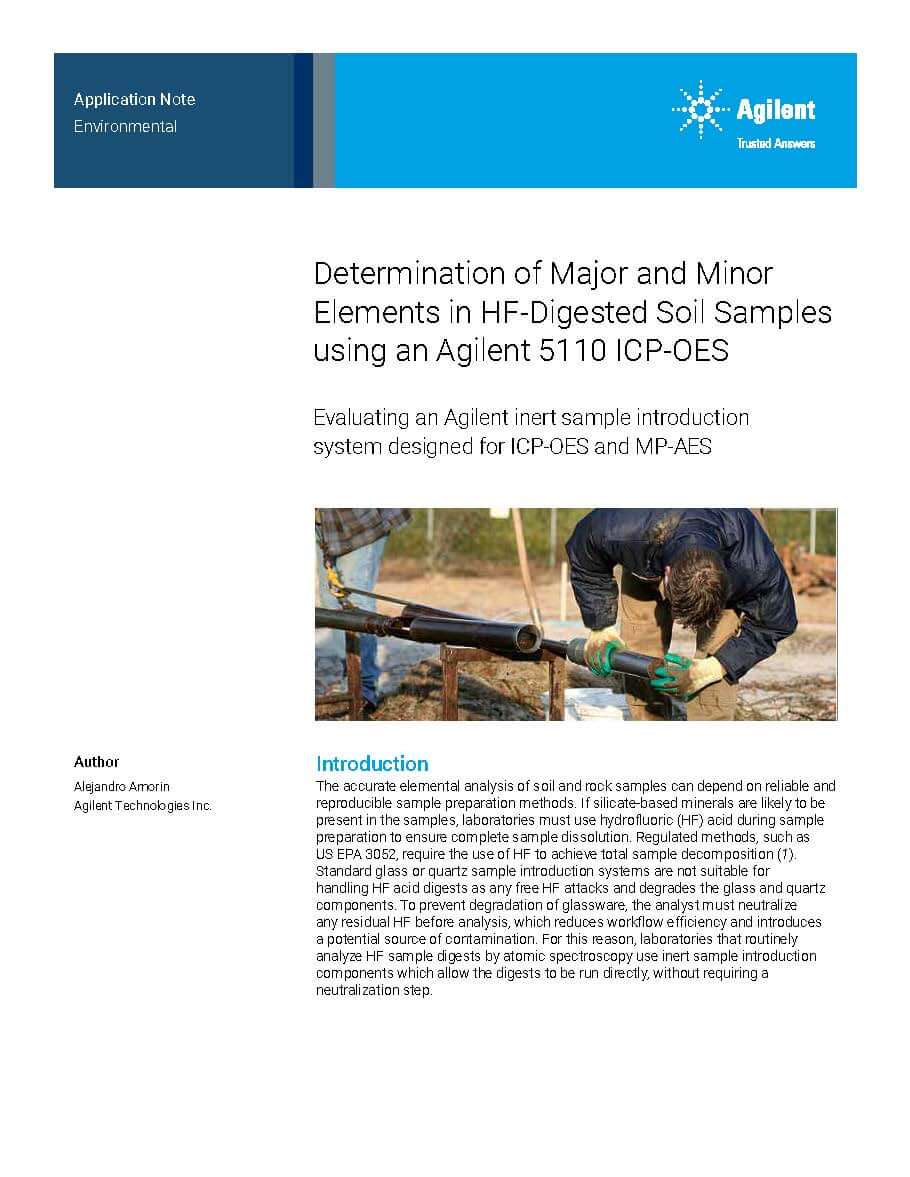The accurate elemental analysis of soil and rock samples can depend on reliable and reproducible sample preparation methods. If silicate-based minerals are likely to be present in the samples, laboratories must use hydrofluoric (HF) acid during sample preparation to ensure complete sample dissolution. Regulated methods, such as US EPA 3052, require the use of HF to achieve total sample decomposition (1). Standard glass or quartz sample introduction systems are not suitable for handling HF acid digests as any free HF attacks and degrades the glass and quartz components. To prevent degradation of glassware, the analyst must neutralize any residual HF before analysis, which reduces workflow efficiency and introduces a potential source of contamination. For this reason, laboratories that routinely analyze HF sample digests by atomic spectroscopy use inert sample introduction components which allow the digests to be run directly, without requiring a neutralization step.

Agilent has introduced an inert spray chamber for Agilent 5100/5110 ICP-OES and Agilent 4200/4210 MP-AES instruments to facilitate the analysis of HF digests without prior neutralization. The spray chamber features a removable internal baffle (Figure 1) that allows it to be used as a double or single pass design. The double pass configuration is suitable for the analysis of samples containing high total dissolved solids (TDS) or for the analysis of organic solvents. With the baffle removed, the spray chamber can also be used as a single-pass design when extra sensitivity is required. The internal surfaces of the spray chamber are permanently treated to ensure good drainage, without requiring any periodic recoating, ensuring a long lifetime. The spray chamber can be used with an inert nebulizer, such as the OneNeb Series 2 nebulizer and an inert torch such as the Easy-fit inert demountable torch. This complete inert sample introduction system is suitable for the direct analysis of HF sample digests.





